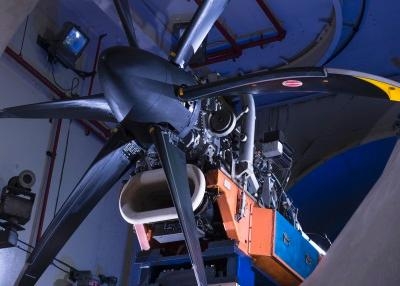Company Has Certified More Than 36 Turboshaft Models In The Past Fifty Years
Pratt & Whitney Canada Corp. said at the Dubai Air Show that it is continuing to focus on bringing new and innovative engines to the market, finding new applications for its existing engine families and constantly improving the operating metrics of its in-service fleet.

“As an engine OEM, we have a keen focus on bringing new engines to market quickly, supported by a comprehensive Entry Into Service (EIS) framework,” says Irene Makris, Vice President, Marketing, P&WC. “In the past five decades, P&WC has certified more than 36 turboshaft models and produced more than 15,000 helicopter engines.”
According to the company, more than 4,300 helicopters around the world fly with P&WC engines, and the fleet has accumulated more than 55 million hours of flight.
“I believe we have one of the most rigorous EIS processes in the industry designed to deliver exactly what our customers require,” says Makris. “As we do with all airframe OEMs, we worked closely with AgustaWestland to complete the recent EIS process for the PW210A engine on the AW169 helicopter which is now being delivered to customers. As part of our EIS process we also solicit pilot and operator feedback to ensure expectations of the new engine are met on day one.”
P&WC also recently announced the extension of the TBO on the power section of its PT6B-37A engine from 3,000 hours to 4,500 hours, resulting in improved economics for operators of the AgustaWestland A119 Koala single-engine helicopter. All PT6B-37A engines in service are eligible for the basic TBO increase, meaning no minimum build standard is required. “This 50 per cent increase in the TBO for the PT6B-37A is good news for operators as it allows them to benefit from decreased maintenance costs,” adds Makris. “The TBO extension is possible because of the considerable investment we have made, resulting in a durable and reliable engine.”

P&WC’s PW100 engine was recently selected by Ukrainian airframe OEM ANTONOV to power it’s AN-132D, a new light, multi-purpose turboprop aircraft. The AN-132D is intended for short- and medium-haul routes and will find use in a number of missions. It can be outfitted with a variety of cabin configurations.
According to Richard Dussault, Vice President, Marketing, P&WC, the PW100 family of engines has developed a global reputation for their durability and dependability. “This is an important and high-profile program for both P&WC and ANTONOV and we are looking forward to developing that potential.”
ANTONOV predicts a potential market for the aircraft of 200 units between 2018 and 2025.
Finally, P&WC has announced that it will restart its PW306B turbofan engine program to power Turkey’s TRJ328 aircraft. The engine was originally developed to power the Dornier 328 aircraft, which was introduced as a turboprop and later converted to a turbofan-powered jet. The TRJ328 will be produced by TRJet, a wholly owned subsidiary of Sierra Nevada Corporation (SNC) that was formed when the global aviation company acquired 328, owner of the Dornier 328’s intellectual property and assets.
“The restarting of the PW306B program allows P&WC to leverage the strengths and capabilities of one of its powerhouse turbofan fan engines,” says Dussault. “We consider it a coveted opportunity to help TRJet reintroduce the 328 aircraft.”
It is expected the new TRJ328 -310 jet will have its first flight from Esenboga Airport, Ankara, Turkey, in 2019. P&WC will also work on a new variant of the PW100 series engine model to power the new TRJet turboprop aircraft to be called the T328-150.
(Source: Pratt & Whitney Canada news release)
 ANN's Daily Aero-Term (04.24.24): Runway Lead-in Light System
ANN's Daily Aero-Term (04.24.24): Runway Lead-in Light System ANN's Daily Aero-Linx (04.24.24)
ANN's Daily Aero-Linx (04.24.24) Aero-FAQ: Dave Juwel's Aviation Marketing Stories -- ITBOA BNITBOB
Aero-FAQ: Dave Juwel's Aviation Marketing Stories -- ITBOA BNITBOB Classic Aero-TV: Best Seat in The House -- 'Inside' The AeroShell Aerobatic Team
Classic Aero-TV: Best Seat in The House -- 'Inside' The AeroShell Aerobatic Team Airborne Affordable Flyers 04.18.24: CarbonCub UL, Fisher, Affordable Flyer Expo
Airborne Affordable Flyers 04.18.24: CarbonCub UL, Fisher, Affordable Flyer Expo




